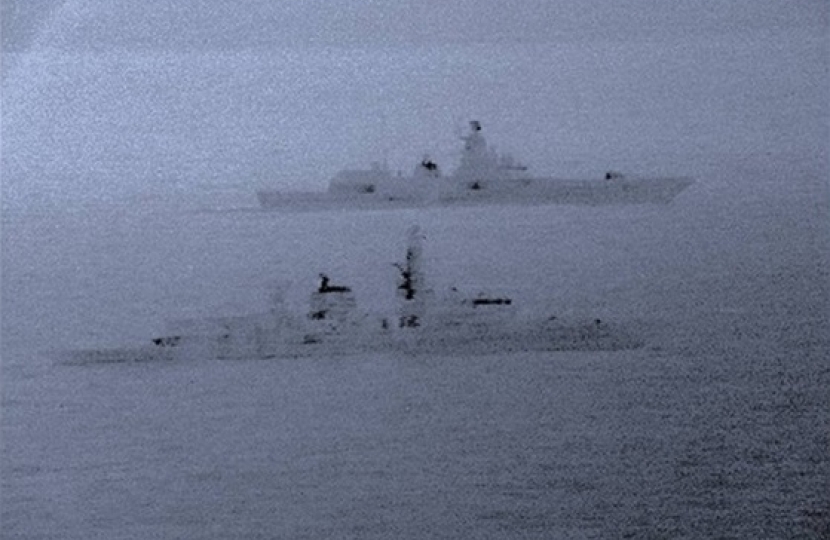
On Christmas Day, while we were opening presents, tucking into our festive fare and generally enjoying the holiday, a strange journey was underway off Yorkshire's coast.
A newly-built Russian frigate, the Admiral Gorshkov, was steaming through the North Sea close to UK territorial waters ostensibly undergoing sea trials.
Our navy chiefs considered it a sufficient threat to dispatch our own forces to escort it safely away from the UK. It was just another instance of Russian warships passing close to UK waters in recent days.
And it is part of a pattern. Russia is in the process of modernising and dramatically increasing the size of its navy, investing heavily in new frigates like the Gorshkov and also submarines.
This matters because a larger and more capable Russian Navy poses a real threat to the world’s communications networks that we all largely take for granted.
As I wrote in my report published just before Christmas, when we send an email, use a mobile, or make a bank payment most of us have a vague belief that it speeds to its destination via wireless signals, perhaps bouncing off a satellite on route. The truth is that 97% of global communications travel not through our skies, but along a network of just 200 fibre-optic cable systems running along our oceans’ floors.
This physical network is the indispensable infrastructure of the 21st century. Thin as hosepipes, these cables carry some $10 trillion of financial transactions a day and underpin the operation of every computer in the world. But they are vulnerable.
Their exact deep-sea locations are both isolated and publicly available, their routes often concentrate at specific choke points, and severing them requires little expertise. These jugulars of the world economy are – both on land and at sea – a singularly attractive target to our enemies.
Whether from an increasingly bellicose Russian navy or terrorist activity, a successful attack has the potential to deal a crippling blow to Britain’s security and prosperity.
These cables are not just vulnerable at sea. Typically, they come ashore at isolated locations around Britain’s coast. Most of these landing points are protected by little more than a sturdy gate, leaving them dangerously accessible.
What should be done about it? Security at cable landing sites should be beefed up for a start. Like Australia, we could establish Cable Protection Zones in vulnerable sea corridors to better police maritime activity. And the private companies which largely own and operate the system should install monitoring equipment on their undersea cables as well as ‘dark cables’ to provide emergency capacity.
The Russians have accused me of scaremongering. But it should be noted when Russia annexed Crimea, among its first moves was to take control of the peninsula’s primary cable exchange and sever its main connection.
If I am guilty of “Cold War Codswallop” as the Russian state-backed website Russia Today suggested, I’m in good company. My report - Undersea Cables: Indispensable, Insecure – has been backed by a former and the current UK Chief of the Defence Staff, a former head of GCHQ and a former Supreme Allied Commander of NATO.
And as the captain of HMS St Albans, the Royal Navy frigate, which spent Christmas shadowing the Admiral Gorshkov off Yorkshire’s coast put it, our trade, economy and information networks depend on security at sea. We cannot afford to neglect it.
